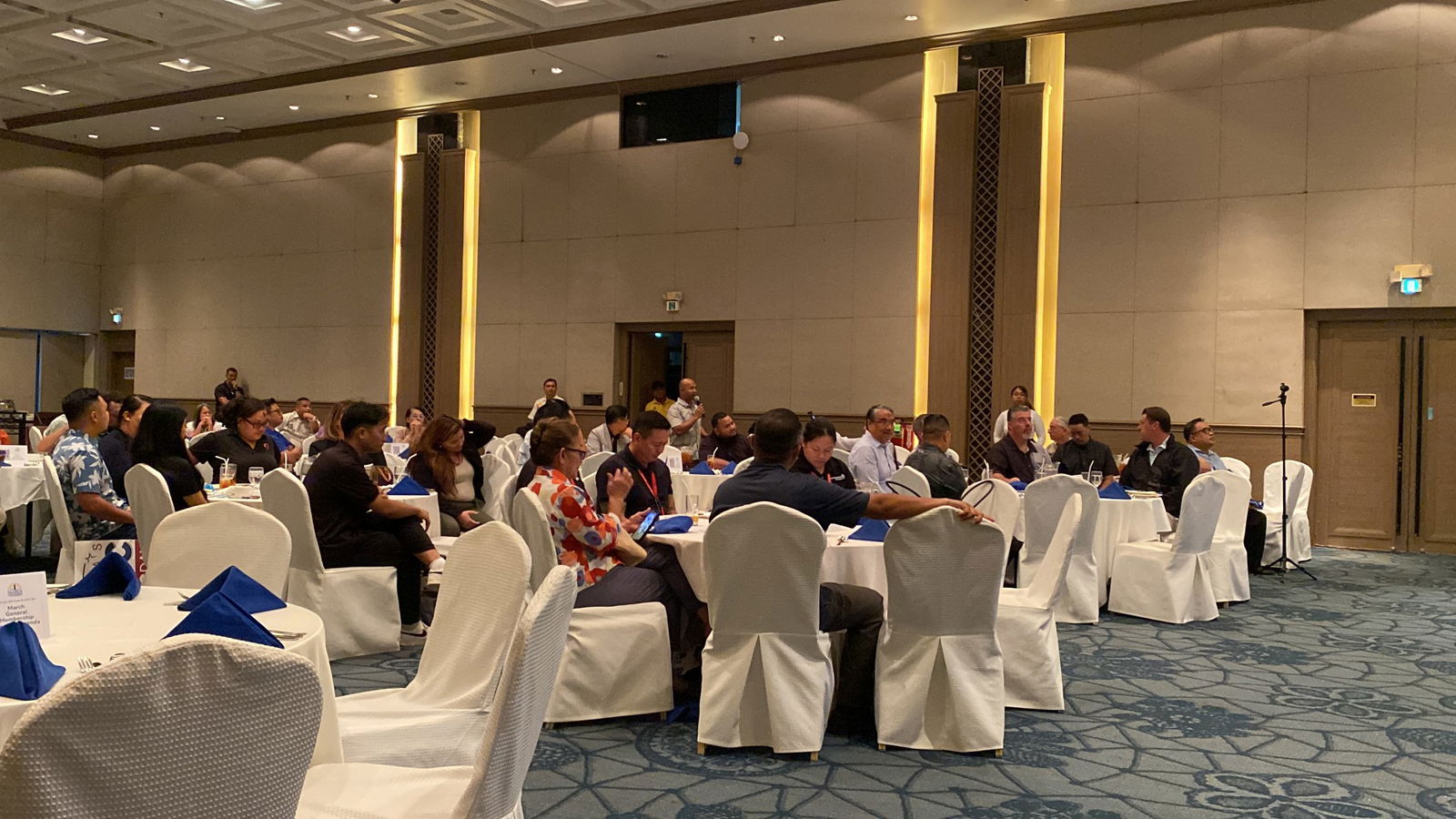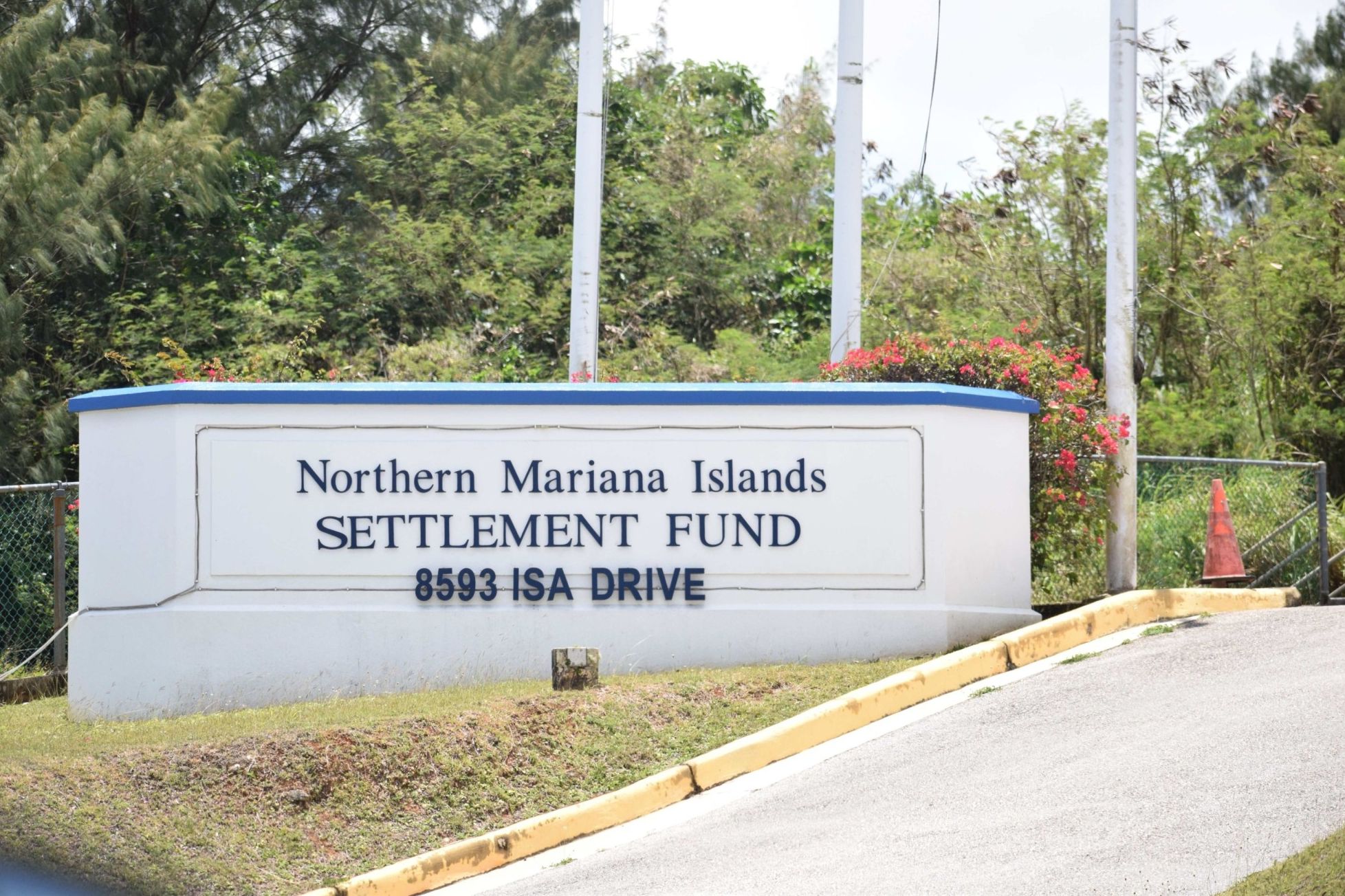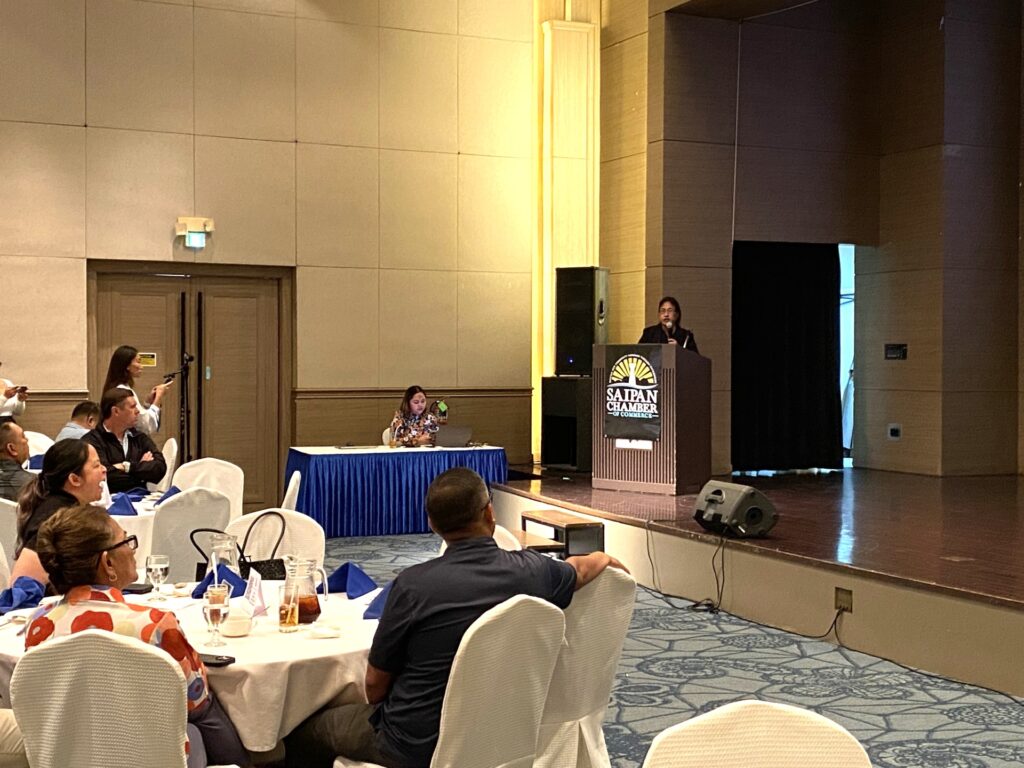
Zoning Administrator Therese Ogumoro talks about the blighted property abatement efforts being undertaken by her office.

Joe Guerrero and other members of the Saipan Chamber of Commerce asked questions and provided feedback at the conclusion of Zoning Administrator Therese Ogumoro’s presentation.
ZONING Administrator Therese Ogumoro was the special guest at the Saipan Chamber of Commerce’s March general membership meeting, where she answered questions about the enforcement of the Nuisance Abatement and Blighted Property Maintenance Act of 2018. The meeting took place at the Saipan World Resort on Wednesday, March 5.
The law prohibits “unsecured abandoned, [or] unfinished buildings,” junk or abandoned vehicles, nuisance vegetation, accumulated garbage or debris, among other things.
The law also requires property owners to keep their properties in good shape and authorizes the government to “abate the nuisance and recoup costs” from property owners — meaning, the government can tear down blighted properties at the owners’ expense if the owner does not fix the property after being given due notice.
Blight is defined as “a condition that endangers life or property by fire or other causes or that substantially impairs property values or the sound growth of the Commonwealth and is a menace to the public health, safety, or welfare in its present condition and use.”
A property owner has 30 days from the date of receiving their abatement notice in the mail to file an appeal.
Non-residential property owners have a 60-day warning period before penalties begin, while residential property owners have a 90-day warning period.
A first offense is subject to a minimum $200 fine. Second and subsequent offenses are subject to a $1,000 per day penalty in addition to other penalties that may be authorized under law.
In the Q&A portion of the presentation, Joe Guerrero, the chamber president, said he supported the law and that both the chamber and the Marianas Visitors Authority have called for action to be taken on blighted properties.
However, he also expressed concern about the penalty timeline.
“I see some of the timelines of how to remediate is like 60 days or 90 days. I don’t know if that’s enough time…just with the economic conditions now, perhaps the board can get feedback from business owners and residents [on] how to allow them more time so long as they’re showing good effort,” he said.
He also sought clarification on whether or not abatement signs posted outside properties were required by law.
Ogumoro said the signs are required and serve as legal notices in case property owners are not responsive to the Zoning Office. She said the law allows for extensions of the warning period.
For her part, Sen. Celina Babauta asked Ogumoro how the Zoning Office determines if a building is blighted, and to speak about possible redundancies in the law.
“You mentioned about the safety of an abandoned building. What criteria does Zoning use, and how does it not duplicate [efforts], or is it an overreach of your office’s mandates? Because certainly [the Department of Fire and Emergency Medical Services] has their own mandates regarding safety of buildings, the Department of Public Works has their own mandates…I see an overlap,” the senator said.
“All I can say is that the act came in, was adopted, and [the] intention of the act was to recognize public nuisance that would affect public safety and health and welfare and also the property values on Saipan,” Ogumoro replied. “That was our main aim. We look at a building. Some buildings have been abandoned and dilapidated for a few years. Once the regulation of this act was adopted, once it triggered our plan to begin enforcement, we went out there and started enforcing.”
Babauta also asked Ogumoro to make recommendations to the Legislature regarding blighted government property.
Babauta likewise asked Ogumoro to comment on a bill that would transfer the Zoning Office’s functions to the Department of Public Works. She said the current version of the bill “basically” abolishes the Zoning Office.
“I am not against that bill, but I need to read it in great detail to understand what functions are being transferred and what functions are being abolished,” Babauta said.
She declined to comment further on the bill “until I confirm with members of the board.”
“That’s our first time to look at it,” she added, referring to the bill.
Leo Pangelinan, executive director of the NMI Humanities Council, asked Ogumoro to speak about the Zoning Office’s “highlights and challenges.”
“Our main highlight right now…is all of the property owners that have signs posted on their properties have been very supportive,” she said. “We’ve received positive feedback from them. As you can see from the photos, they’ve begun to improve, or they’ve completed demolition of their structures that are unsafe or abandoned.”
She added, “We have a lot of challenges but first one in my head is we want to make sure that before we even post a property or issue a violation notice we want to make sure ownership information is solid and correct.”
A chamber member sought clarification on what the Zoning Office requires a property owner to do after a notice is issued.
“[At] some sites, [it] seems that they do complete tear downs while others…just cleaned the property,” the chamber member said.
“It all depends on the nature of the violation there,” Ogumoro said.
She said her office is dealing “mostly with abandoned and dilapidated structures at the moment.”
“Our message to the public is that the intent of the law is to clean our island to make it look attractive and safe. It’s never the intent to collect fines or impose liens against properties. Those are tools…Zoning intends to use to compel compliance,” she added.











